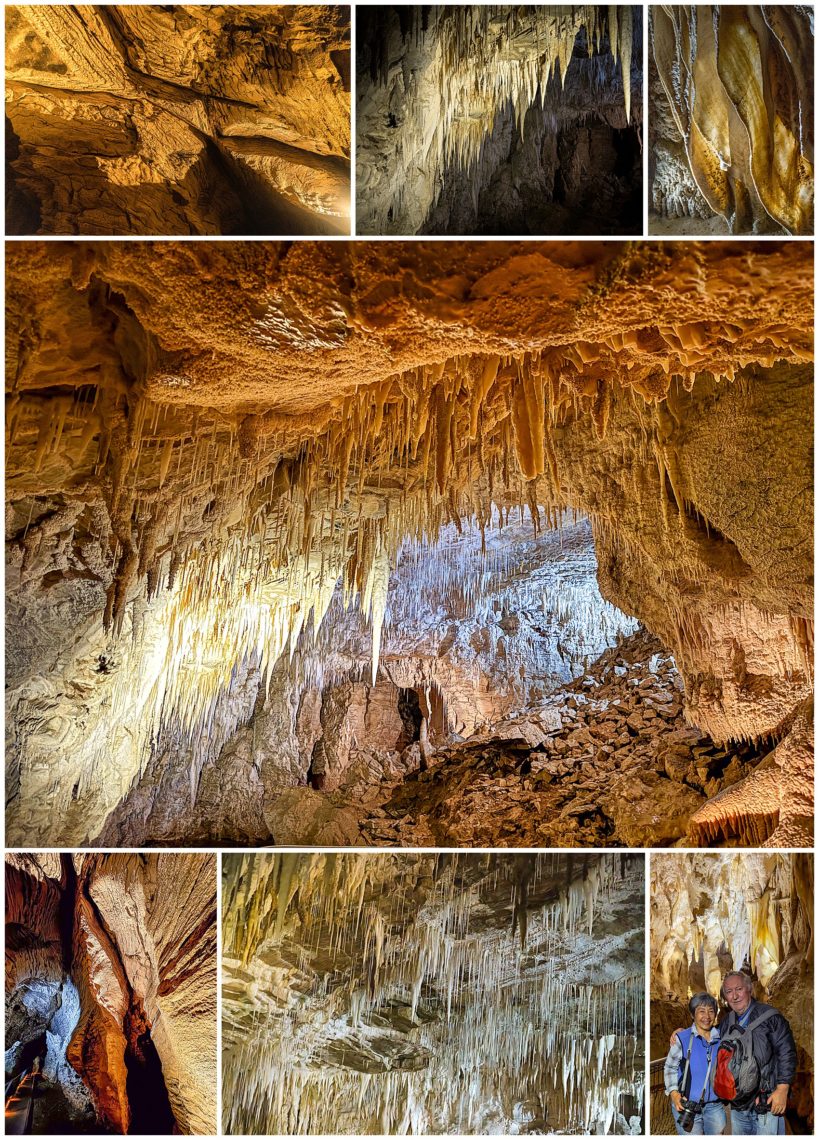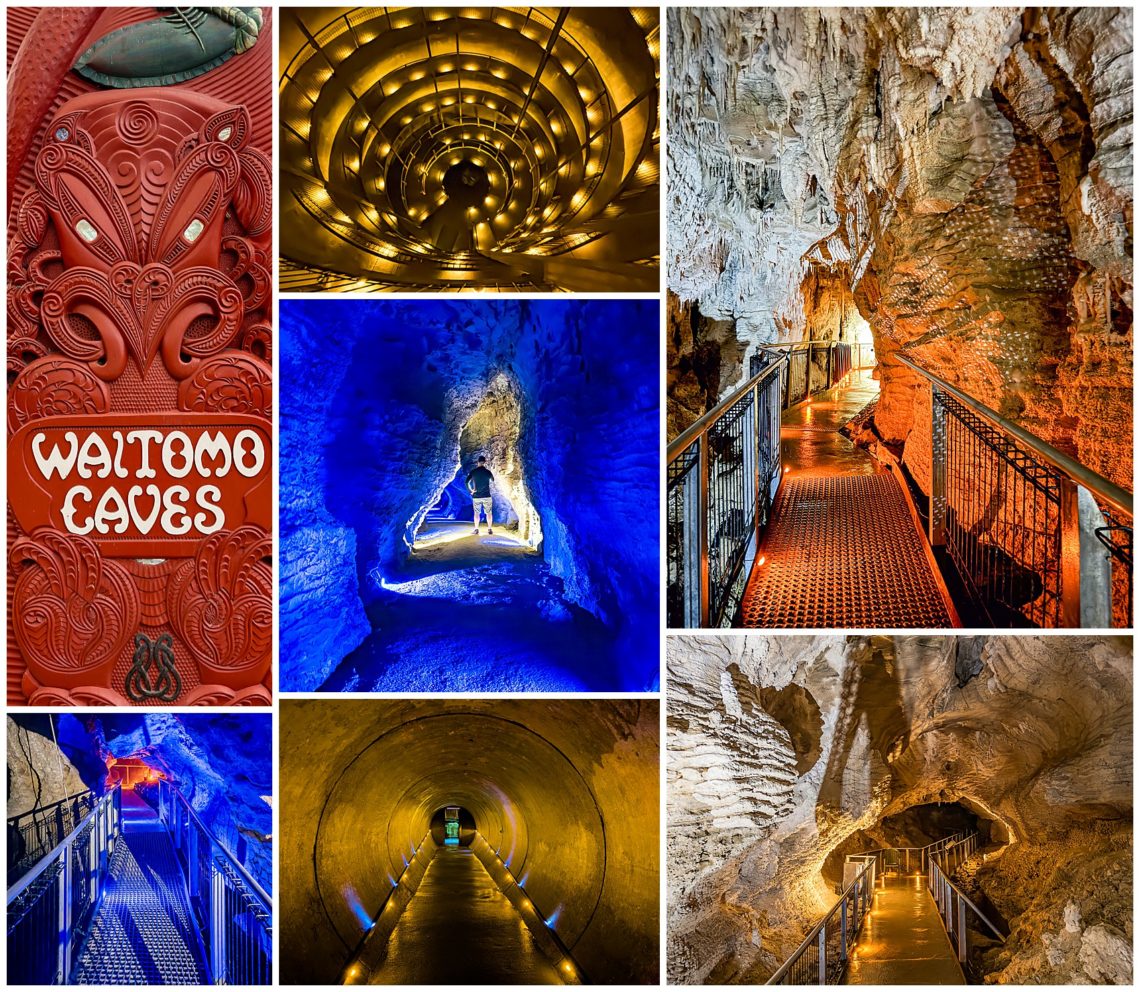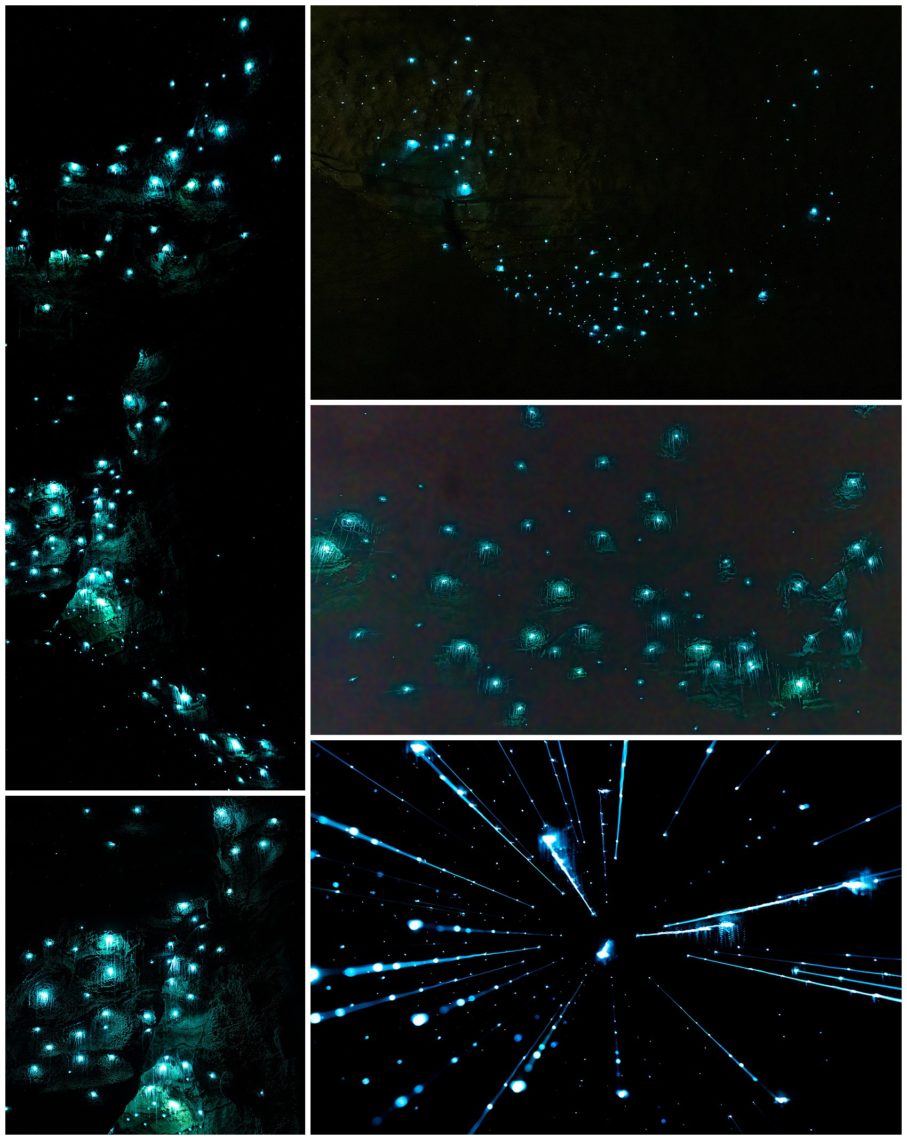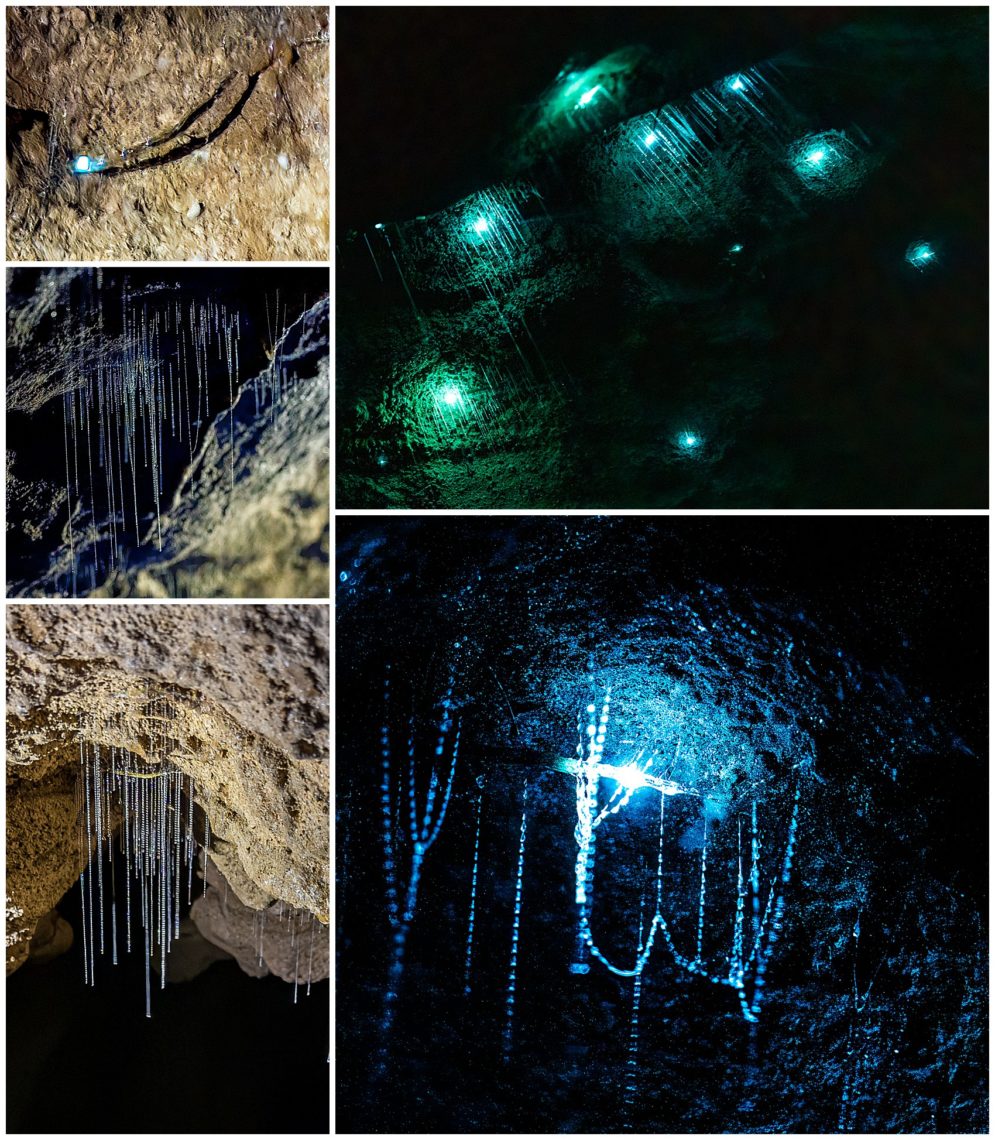
Waitomo Caves is just an hour south of Hobbiton. Three caves make up the Waitomo caves network, and Ruakuri Cave is the only one where photography is allowed. These caves are famous for their abundance of glow worms, stunning stalactite and stalagmite formations and an underground river. Each cave has its unique features. In Waitomo Caves, you can ride in a boat and watch thousands of luminescent glow worms overhead. Ruakuri is the one where one can go white water rafting and inner tubing in a dark cave. The water level was so high the day we went that the rafting was cancelled, so we did not hear the screams of glee.

When you enter the Ruakuri Cave, you descend down a steep 15-meter spiral staircase (middle top). This is the only handicap accessible glow worm cave, so there were no worries about tripping. It is quite cold though. Along the way, are stunning formations of stalactites and stalagmites (right column).

It is pitch black when you first encounter the glow worms. When your eyes get adjusted to the very low illumination in the cave, pin hole lights that look like stars begin to show up on selected parts of the cave. You see literally thousands of luminescent light points. It is not until you put them under a macro lens and finish post processing that you can see the individual worms.
Because you are photographing completely in the dark, you must know your camera controls by feel. Sometimes an error happens, such as changing the zoom range while the shutter is still open. Sometimes serendipity strikes, and an image such as the lower-right is achieved, quite by accident.

Glow worms are not actually worms, but rather the larva of a gnat. Our guide told us that management did not think calling them “glow maggots” would be a very good selling point, so they adopted the term “glow worms” instead…☺ The image on top left is the glow worm, and looks like a stick with a glowing end in the darkness.
These worms are only found in New Zealand and Australia. They are widespread in New Zealand, where caves have high humidity. The larva spins a nest out of silk on the ceiling and then hangs down silk threads, placing sticky droplets that are used to capture prey (middle-left and lower-left).
Glow worms have a luminescent organ, like a human kidney, that emits a soft light, and is often used to attract prey into their threads. The glow is the result of enzyme reactions in their organ. When a critter is captured, the larvae rolls up its thread to lift the prey.
When the glow worm is disturbed, the light suddenly goes off for a period of time like slithering into a crevice. As such, photography is not allowed on the public tours. This one cave allowed photography, but only with a guide and in very small groups (there was only one other person besides us this day).
Close up photography was difficult in this environment. You are operating the camera in total darkness, using long exposures, with the only light coming from the glow worms themselves. Focusing would be nearly impossible on most cameras, but our Sony A1 and 7R5 cameras allow us to focus in near total black. It was tricky to get the exposure just right to show the details, but avoid overblowing the light of the worm itself. The worm starts at 1/2″ in length, and grows to nearly 2″ by the time it is ready to pupate. The portion that glows is only a tiny portion of the entire worm (upper-left).
Evelyn was so frustrated that she was ready to give up many times, since it is so difficult to see the results on the LCD during the photo session, and there is no light to focus (meaning manual focus was required). You really have to wait until post processing has been completed to see whether you had any success. Surprising to Evelyn, she shot the image on the right bottom, with the lit beads.
We had not intended to go to the glow worm caves at all. Daniel Kordan, our New Zealand photo leader, highly recommended that we try to schedule this, as the tours fill up weeks in advance. We were lucky that the photo tour is poorly advertised and we only found it because Daniel had told us that it existed. We’re glad we did it.
